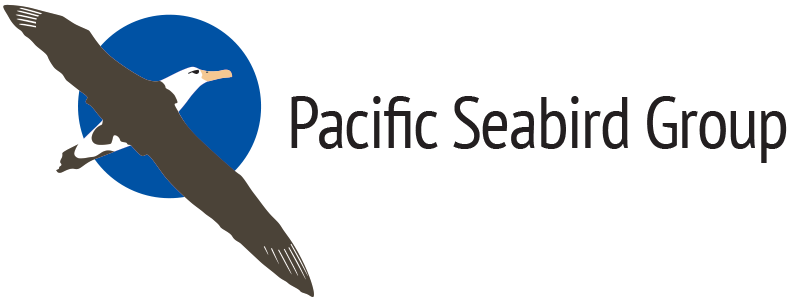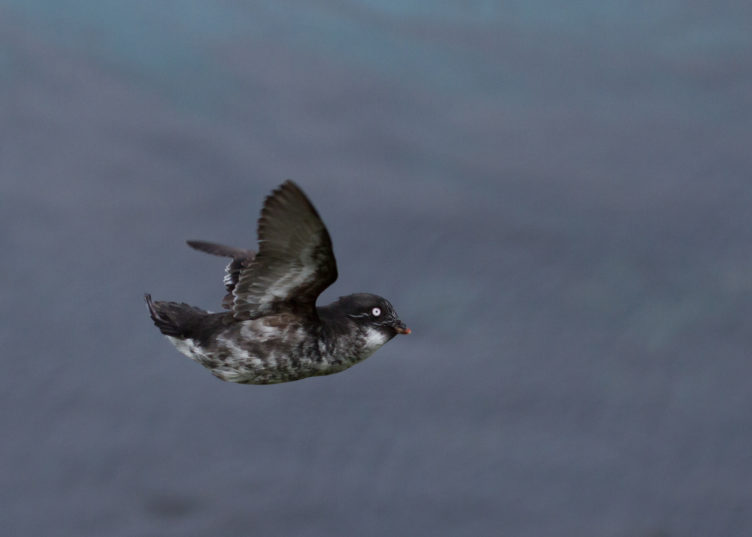Orben et al. (2024d)
Author Information
Rachael Orben, Will Kennerley, and Luke Stuntz: Department of Fisheries, Wildlife, and Conservation Sciences, Oregon State University, Hatfield Marine Science Center, Newport, Oregon
Jacque McKay: NSF-REU Intern, California State University Monterey Bay, Seaside, California
Entencia Cardenas-Ritzert: Doris Duke Scholar, University of Idaho, Moscow, Idaho
Ricardo Rodriguez: Environment for the Americas Intern, Yaquina Head Outstanding Natural Area, Bureau of Land Management, Newport, Oregon
Keenan Yakola: Department of Fisheries, Wildlife, and Conservation Sciences, Oregon State University, Corvallis, Oregon
Amanda Gladics: Oregon SeaGrant Assistant Professor of Practice, Department of Fisheries, Wildlife, and Conservation Sciences, Oregon State University, Astoria, Oregon
2023 marked the 17th consecutive year of seabird monitoring at Yaquina Head Outstanding Natural Area in Newport, Oregon, and the third consecutive year of monitoring at Pirate Cove in Depoe Bay, Oregon. Will Kennerley (Faculty Research Assistant, OSU), Jacque McKay (NSF REU Intern), Entenecia Cardenas-Ritzert (Doris Duke Scholar), Ricardo Rodriguez (Environment for the Americas Intern), and Rachael Orben conducted reproductive monitoring for Common Murres (Uria aalge) and Brandt’s and Pelagic Cormorants (Urile penicillatus and U. pelagicus). Provisioning rate and diet composition data for murres were also collected. Despite heavy bald eagle (Haliaeetus leucocephalus) predation early, murres produced chicks at average rates and cormorants had near record high productivity at these two central Oregon colonies. This long-term study is funded in part by the BLM, USFWS, NOAA, and NSF.
In 2023, the Seabird Oceanography Lab (Rachael Orben, Adam Peck-Richardson, Alexa Piggott, and Will Kennerley) assisted Real Time Research, Inc. (Allen Evans, Ken Collis, Nathan Banet) with the ongoing monitoring of avian predation on Endangered Species Act (ESA)-listed juvenile salmonids in the Columbia River Basin. The 2023 objectives were to (1) assess the distribution and size of piscivorous waterbird colonies, (2) estimate colony-specific predation/consumption rates, and (3) estimate cumulative effects of predation on juvenile salmonid survival. Monitoring of colonies was conducted from the air, by boat, and/or from shore. Three aerial surveys were conducted during May and June. Colony size was estimated by digitizing high-resolution aerial imagery corresponding with the peak in nesting activity at each colony and enumerating visible birds using ArcGIS and DotDotGoose. Predation rates were estimated by scanning for smolt passive integrated transponder (PIT) tags collected on bird colonies.
The Seabird Oceanography Lab, in collaboration with OSU’s Marine Mammal Institute, completed three two-week surveys of pelagic seabirds off Oregon and Northern California in April, August, and October. Lisa Ballance (OSU, Marine Mammal Institute), Will Kennerley, Amanda Gladics (OSU SeaGrant), and Keenan Yakola (OSU PhD student), among others, led seabird observation efforts with the goal of constructing species distribution models around proposed offshore wind areas.
Clara Oliverson (OSU undergraduate), with support from Rachael Orben and Will Kennerley, performed a second complete season of Tufted Puffin (Fratercula cirrhata) bill load photography at the Haystack Rock colony in Cannon Beach, Oregon. This work continues OSU’s efforts to document Tufted Puffin prey in response to the drastic decline of this species’ breeding population in the state. Funding support came from the Oregon Wildlife Foundation and Friends of Haystack Rock.
In collaboration with the US Fish & Wildlife Service, the Seabird Oceanography Lab is studying the behavior of native terrestrial carnivores at important seabird colony islands along the southern Oregon coast. By using camera traps, scat analysis, and non-invasive genotyping, we hope to gain an understanding of how carnivores are utilizing breeding seabirds as a plentiful, but ephemeral and non-standard prey resource. Preliminary results show that both northern river otters and American mink are major predators of Leach’s Storm-petrels (Hydrobates leucorhous) in southern Oregon, but that mink likely pose a more significant threat to storm-petrel reproductive success. Luke Stuntz (OSU) is conducting field research on predator activity at these sites year-round, and USFWS plans to begin predator management efforts during the summer of 2024.






